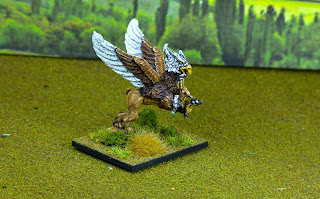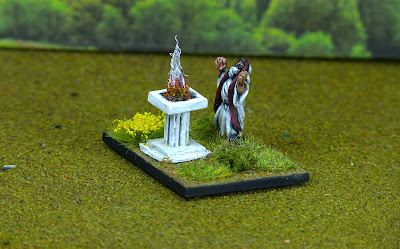I’ve created a set of Mythological Achaemenid lists for HOTT. These cover the Persians from Cyrus the Great (find his seperate Cyropaedia Army list here) up to the fall of the empire. They lean into the realm of Zoroastrianism and early Iranian mythologies.
Mythological Persians 1
Early Achaemenid Persians (600 - 480BCE)
Hero General (Cyrus the Great Only) @ 4 AP X 1
OR
Rider General (King in chariot) @ 2 AP x 1
Riders (Persian and Scythian cavalry) @ 2 AP x 3
Shooters (Immortals/Sparabara) @ 2 AP X 5
Spears (Subject hoplites) @ 2 AP x 1
Hordes (Conscript Masses) @ 1 AP x 4
HOTT Mythological Persians 2
Later Achaemenid Persians (600 - 480BCE)
Rider General (King in chariot) @ 2 AP x 1
Riders (Persian and Scythian cavalry) @ 2 AP x 5
Knights (Armoured cavalry) @ 2 AP x 1
Spears (King’s Apple-bearer Guard) @ 2 AP x 1
Spears (Mercenary hoplites) @ 2 AP x 3
Hordes (Kardakes / Conscript Masses) @ 1 AP x 2
Alternatives for both lists
Cleric (Magi priest) @ 3 AP x 1 - May not be used with any gods (including the god Verethragna)
OR
God (Mithra or Anahita) @ 4 AP x 1
Beast (the god Verethragna in the form of a massive boar) @ 2 AP x 1
Flyer (Griffin or Chamrosh) @ 2 AP x 1
Notes:
Clerics and Gods.
For HOTT purposes, I’ve interpreted the Magi as being strict followers of Zoroaster who believe that there was only one god, Ahura Mazda. This means a Mythological Achaemenid general may have either a Cleric or a god (including the god Verethragna), but not both.
Click on these links for more information and photos:
 |
| Hero - Cyrus the Great |
 |
| Cleric - Magi Priests |
 |
| God - Anahita |
 |
| Flyer - Griffin & Chamrosh |
 |
| Beast - The god Verethragna |



















